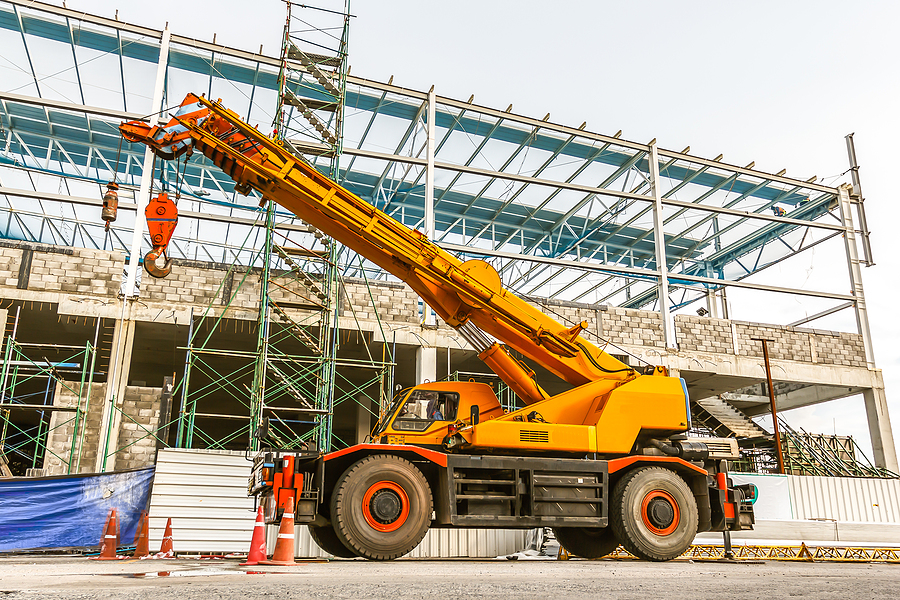Council Ensures School New Build Is ‘Disaster-Free’
Dumfries and Galloway Council have taken steps to ensure that Dumfries High School’s new build is free from disaster, having learnt its lesson over a scandal-plagued leisure centre development.
The Daily Record reports that education chiefs are wanting to prevent any financial or structural disasters when the new build of Dumfries High School commences.
The council is insistent that it has learned from the costly issues that arose from the £17 million DG1 leisure complex which was forced to close after six years for a £20 million programme of repeats and overhaul.
During a recent meeting of Dumfries and Galloway Council’s education committee, members tabled a discussion of the progress of phase two of the Dumfries Learning Town project, which will see Dumfries High School rebuild at an estimated cost of £48.2 million.
This includes a partial refurbishment of Dumfries Academy for £16.5 million, and the relocation of Loreburn Primary into the Academy’s Minerva building, at a cost of £7.12 million.
The programme of works is due to commence in 2023, and a report on the contract requirements for a new build Dumfries High School was tabled ahead of the committee appointing a construction partner.
North West Dumfries Councillor David McKie said: “The experience we’ve had over the last number of years with new-builds, some of them have been pretty disastrous.
“Is there any chance that we could get companies that – if they get the contract – they put a fund aside for us to use if we’re unhappy with the development when it’s supposedly finished?”
Council education officer Larann Foss said that it was a good question, but from a. Technical viewpoint, the council does not have the capacity.
“From a legal standpoint, we have the ability to sign off the quality of the product when it’s finished,” he said.
He continued to say that if the council was not in agreement with the specification, assuming it hadn’t been met, then there is a legal position where the council look to gain damages, and they can look at a legal challenge with the contractor to resolve any defects, for which there is a warranty period.
One key difference, he stated, is that for this project, the council has ‘learnt all the lessons’ from the Edinburgh Schools, DG1, and from the root cause analysis.
“We’ve also gone down a road now where we’re selecting a procurement route that’s most advantageous for the council – and a huge part of that will be the quality control part of it.”
He said there is no one in a similar position that wasn’t already aware of the development issues in Dumfries and Galloway, and the situation creates a ‘goldfish bowl’ for any contractural and structural work that takes place.
The quality control side of the project will be scrutinised more than any other project to date, he added, but wanted to ensure that there is a legal position to challenge the contractor should there be any issues with the end product.
If you’re looking for educational furniture for your school refurbishment, talk to us today.
Read moreWhat Was The First Modern Crane?
The crane is one of the first and most important simple machines ever invented, as it allowed for the construction of buildings that were taller than the average person using materials that weighed more than a person could carry.
That principle has, through millennia of evolution, led to cranes such as the Kroll K-10000 that can reach over 80m in the air and carry tonnes of heavy equipment to help construct skyscrapers and incredibly tall structures.
However, behind every modern crane hire was the evolution from a machine that fundamentally had not changed since the Age of Antiquity to the modern, powered and complex machines that make our modern skylines possible.
Here is the moment where everything in construction changed and how the crane helped civilisation take a giant leap forward.
Several Thousand Years Of Stagnation
From the invention of the treadwheel crane by the Ancient Romans in the form of the Polyspaston, the principle and fundamental design of cranes largely remained stagnant for at least 2000 years.
A team of labourers on both sides of the winch would use their physical strength combined with the mechanical advantage the larger wheels gave to lift 3000kg, and a wooden lifting tower could be constructed to create advanced cranes that could lift up to 100 tonnes with a lot of coordination and work.
However, once the Western Roman Empire fell in the 5th century AD, many of its ideas fell with it, only being rediscovered nearly 1000 years later as the treadwheel and wheelbarrow started to integrate themselves into the more labour-intensive medieval construction site.
Exactly how it was reinvented is unknown, although the two biggest theories are that it was inspired by early waterwheels, a similarly labour-saving machine used in mills.
Another theory is that De Architectura, Vitruvius’ seminal text on Roman construction and design that would have been available to many Catholic monasteries, was a direct inspiration.
Regardless, with some variations for use in harbours, the fundamental design of cranes would not change until the 19th century.
Birth Of The Hydraulic Crane
The first modern crane was invented in 1838 by William George Armstrong, who sent a letter to the Mechanics Magazine an idea he had of a hydraulic crane powered by water.
The way it worked was to use a ram that was forced down by a pressurised fluid regulated by a valve, which in turn would pull on a chain to lift the heavy load.
Mr Armstrong, a Tyneside businessman, had the opportunity to test his invention when the Newcastle Corporation decided to create a pipe system to bring reservoir water to Newcastle homes.
He successfully petitioned them to let him use the excess water pressure to power a coal crane at the Quayside, and it was so successful three more cranes of a similar design were added to the Newcastle docks.
This lead to the first dedicated hydraulic manufacturing location at Elswick works, which not produced over 100 cranes per year by the 1860s but also was commissioned to develop hydraulic bridges and dock gates.
Read more
Education Secretary ‘Breaks Ground’ On £2bn School Rebuilding Programme
Education Secretary Nadhim Zahawi broke ground at West Coventry Academy on Thursday 23 September, one of the first 100 schools to be rebuilt under the Prime Minister’s ten-year School Rebuilding programme.
A GOV.UK press release explains that the School Rebuilding programme aims to undertake major rebuilding and refurbishment projects at school and sixth form college buildings in England. All the buildings in the programme are to be rebuilt to enhanced sustainability standards and achieve net-zero in operation.
The ground-breaking at West Coventry Academy marks the beginning of the £2 billion investment to rebuild the first 100 schools, including the £200 million ‘fast track’ for further education (FE) colleges, to help transform the lives and educational experiences of pupils.
The Education Secretary was joined by workers, pupils and staff at West Coventry Academy, where new buildings will be designed to reduce energy consumption and support the UK’s net-zero by 2050 target.
The £38.4 million project is a complete rebuild of the school and includes a brand new, state of the art sports hall, which will also serve the local community.
The government is currently consulting on how to prioritise which schools will be selected for the School Rebuilding Programme in future.
Education Secretary Nadhim Zahawi said: “Today I broke ground on one of the first 500 schools that the government is rebuilding, which will transform the lives of thousands of children over years to come.”
He explained that the programme will revolutionise the school estate to future proof both the education of our children and the environment, with new schools achieving net-zero operation, which leads the charge for more sustainable schools and support for students and teachers to make a positive impact on the environment.
“These rebuilds and refurbishments, with the first 100 projects backed by £2bn government funding, will create world-leading education facilities, from classrooms and science labs to sports halls and dining rooms,” Zahawi added.
The Department for Education plans to showcase the work to make school and college sites more sustainable at the COP26 climate change conference in Glasgow in November.
The measures to be announced at COP26 will hone in on the government’s championing of climate change education and skills, which make it easier for schools and pupils to support local biodiversity and help make a positive impact on the world and environment
The Department for Education will also be looking at how long it will take school buildings to lower their carbon footprint further, including research into the construction and layout of school sites, the creation of more outdoor spaces within school sites, and improvements into how schools are powered.
COP26 will bring education and climate ministers together from across the world to set out the Government’s vision and encourage others to make commitments to sustainable education - making schools greener, but also equipping young people with knowledge about their environment and highlighting education and training opportunities in the green economy.
If you’re looking for educational furniture for a school or college refurbishment, talk to us today.
Read moreUK Construction Week opens this October
After a two-year break, the award-winning UK Construction Week (UKCW) is to return to the NEC in Birmingham on 5-7 October.
Construction Global reports that each day of the show will have a theme, with day one focusing on sustainability, day two on diversity, equality, and inclusion in construction, and day three on the big issues around quality, social value, and building safety. There will also be the UKCW’s well-established half-day summits on Quality and Wellbeing.
Attendees will be able to find over 150 hours of continuing personal development (CPD), product demonstrations, digital technology, and MMC (Modern Methods of Construction) solutions, innovative materials and technology.
Products
With the pandemic halting any such expos and trade shows, exhibitors will be wanting to showcase two years’ worth of exciting new product launches, innovative technology developments, and will be providing product demos and offers on over 6,000 products.
Major brands such as Google, HS2, Geberit, Hanson Plywood, Ford, Xero, Procore and the Construction Innovation Hub will be taking part. The Innovation Zone will also return this year – a collection of the most interesting and inventive products to have recently launched onto the specification market.
Learn
The UKCW main stage, sponsored by COINS, developers of software for the construction industry, will see keynote presentations by senior leaders from, among others, McKinsey, the Construction Products Association, CIOB, Willmott Dixon, Barratt Homes, Bioregional, Grimshaw, the Sustainable Energy Association and the Construction Leadership Council.
A series of seminars from COINS, titled ‘Future of Construction’, will focus on how the pandemic has changed how we build, and how that can be used positively. The seminars will cover updates in technology such as collaborative urban design via augmented reality, procurement, sustainability, wellbeing and more.
Go digital
There will be a Digital Construction Hub at UKCW which will be hosting over 30 presentations over the three days, including over 10 hours of CPD for architects.
Highlights at the Hub will include an interactive workshop from Birmingham City University exploring the usefulness of Augmented Reality as a visual design tool for urban design projects, plus a practical session from one of the leading legal specialists in BIM (building information modelling) to review common risks, causes of disputes and how to mitigate them.
One of the presentations will take a closer look at how Manchester-based engineering consultants Buro Happold has adapted BIM and unskilled its workers, to provide practical advice around skills and development, and how the firm dealt with key legal and contractual risks.
There will also be sessions on the UK BIM Framework’s standards and guidance and the national digital twin programme.
The Digital Construction Hub is sponsored by Procore, which will deliver practical case studies and high impact training sessions every day, and is curated by the UK BIM Alliance. All seminars are free to attend and will be suitable for architects’ CPD.
A single entry badge will provide access to multiple sections: Build sponsored by Easy-trim, Modern Methods of Construction, Building Tech, Timber, Civils, Energy and HVAC, and Surface and Materials, as well as Grand Designs Live.
Visit the UK Construction Week website for free registration.
If you’re looking for plant hire in Hull, come and talk to us today.
Read moreRefurbishment Brings Wrexham Pupils Under One Roof
A school in Wrexham is preparing for a major refurbishment project that will enable all its pupils to be under the same roof.
Leader Live reports that pupils at Ysgol Yr Hafod in Johnstown, in the country borough of Wrexham, North Wales, are currently taught at two different sites in the village, depending on their age group.
Now an application has been forwarded which will see three new classrooms being built to accommodate infant school pupils at the site on Bangor Road, where the junior school pupils are taught.
The project will also see the refurbishment of the existing building to create accommodations for the 350 students. The application also proposes the introduction of a new staff car park and a multi-use games area.
During the proposed construction works, two temporary teaching blocks will be erected on the site, each of which containing four classrooms.
Architects acting on behalf of Wrexham Council and building firm Wynne Construction stated in the application: “This planning application seeks consent for a single storey, three classroom extension, connecting to the south facade of the existing Ysgol Yr Hafod school building.”
The statement added that as well as creating classrooms fit for the 21st-century, the plans outline a new main entrance and administration hub, a new early years foundation phase class base, and supporting ancillary facilities.
The application also seeks permission for the refurbishment of the current school building so that classrooms can be brought in line with modern teaching standards.
It also asks for consent for the change of use of a neighbouring residential schoolhouse property, also on Bangor Road, from a private residential dwelling to a non-residential institution.
It proposes that a single-storey extension on the south-eastern side of the property, which will create a new class base to provide for ‘wrap-around’ care for part-time students and after school clubs that typically take place outside of regular school hours.
The application concludes with consent sought for the new staff car park, multi-games area, and all the additional associated external works to accommodate the proposed scheme of works.
Wrexham Council's Lead Member for Education, Councillor Phil Wynn, said: “As part of our ongoing commitment to our young students, it’s great to be able to announce this project after securing funding from the Welsh Government 21st Century schools programme.”
Local councillor and chair of governors at Ysgol Yr Hafod, Councillor David A Bithell, said it was very exciting news for Ysgol Yr Hafod in terms of securing substantial funding in Johnstown, and that it will allow all age groups to be taught on the same site, enabling the school to become a hub of learning for the area, improving education facilities for all students.
Funding for the improvements will be provided by the Welsh Government with the local authority also contributing to the costs.
A decision will be made on the application by council planners at a later date.
If you’re looking for educational furniture in the UK, get in touch today.
Read more




